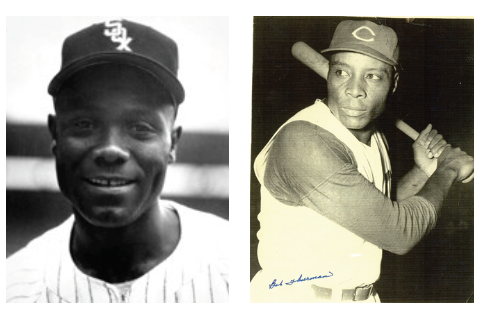Like their Major League careers, the news was welcome but a bit late for two Wichita baseball stars.
Earlier this year, Major League Baseball announced that Negro League statistics would be considered big league stats. For Bob Thurman, who started a Major League career at age 38 after three seasons of Negro League play, and Bob Boyd, who began his at 31 following two Negro League seasons, the change improved their career statistics, but neither was here to enjoy it. Thurman died in 1998 at age 81 and Boyd in 2004 at 84.
Both men had felt the sting of the big leagues’ segregation policies that were not loosened until after World War II and even then only slowly. Still, Thurman played five years for the Cincinnati Reds and Boyd was in the majors for 11 years, mostly with Baltimore where he hit over .300 four times.
When Negro leagues statistics were added to their Major League totals in May, it raised Thurman’s lifetime big league batting average from .246 to .275. For Boyd it meant 53 hits added to his major league total.
Thurman was born in Wichita, played semipro baseball here and then went into the Army in World War II. He signed with the Negro Leagues after his discharge and also played during the winter in Puerto Rico. It was there he once played in the outfield with Willie Mays and Roberto Clemente, two Hall of Fame members. After playing for the Reds, Thurman became a scout. The baseball field in McAdams Park is named for him.
Boyd was from Mississippi and came to Wichita in 1964 to drive buses and play for the National Baseball Congress champion Dreamliners, a team sponsored by the city bus company. In winter league baseball he was nicknamed “The Rope” or, actually, “El Ropo” for the laser-like line drives he hit. He was a first baseman who ran a 10-second 100-yard dash.
Recognizing Negro League statistics had a profound effect on many Major League records. Many of the records held in the past by white players yielded to the new numbers. For example, Ty Cobb had been the lifetime batting average record holder. But the Tigers’ center fielder now is in second place behind Pittsburgh Crawfords catcher Josh Gibson, whose lifetime average beat Cobb .373 to .366. Gibson hit over .400 seven times while Cobb did that just three times.
Former Wichitan T. J. Young’s stats are also now part of the records. Young apparently was the first black player to break the color line locally by catching for Mulvane in the Oil Belt league in the early 1930s.
For 10 years, mostly with the Kansas City Monarchs, Young hit .297 in Negro League play and made the all-star team in 1933.
The Major Leagues had resisted including Negro League stats with those of the American and National Leagues for years for several reasons. One was black baseball records were not complete and those that existed were sometimes scattered. Too, Negro teams played fewer games against top-level competition. However, continuing research has updated many Negro League numbers, making them more comparable to those of the American and National Leagues.
In an interview shortly before his death, Boyd put it all in perspective. “Players in the black leagues were major league quality players. I don’t mean double A or triple A but major league. Guys like those were playing when I was. Some were too old to be have a chance, but they were still major league quality.”
And now the records reflect it.
Bob Rives is the author of “Baseball in Wichita” (Arcadia Publishing, 2004). He can be reached at bprives@gmail.com.










